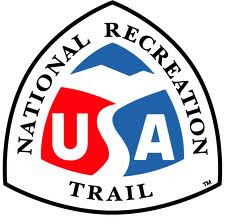Alabama Is the Home of 14 Newly Designated National Recreation Trails
 With school letting out, and oppressive summer weather still a few weeks away, many people’s thoughts are turning towards outdoor activities as a way of relaxing and keeping physically fit. If you happen to be one of these people, and are looking for new opportunities to commune with nature, then you will be interested to learn that the U. S. Department of the Interior has recently designated 54 new National Recreation Trails situated throughout the United States. Running through both densely populated urban centers (the Los Angeles River Trail in California) and sparsely inhabited rural landscapes (the Kanatak Trail on the Alaska Peninsula), these trails range in distance from less than a mile (Bailey’s Woods Trail in Oxford, MS) to nearly 190 miles (the Georgia Coast Saltwater Paddle Trail). Interestingly, the state that received the most designations this year was—you guessed it—Alabama with fourteen. The Oak Mountain Red Trail is the only one of these fourteen located in the Birmingham metro area. Nestled in Oak Mountain State Park near Pelham, the trail consists of approximately 25 miles of varied terrain, much of which has been set aside for mountain biking. The trail is maintained by both park staff and the Birmingham Urban Mountain Pedalers.
With school letting out, and oppressive summer weather still a few weeks away, many people’s thoughts are turning towards outdoor activities as a way of relaxing and keeping physically fit. If you happen to be one of these people, and are looking for new opportunities to commune with nature, then you will be interested to learn that the U. S. Department of the Interior has recently designated 54 new National Recreation Trails situated throughout the United States. Running through both densely populated urban centers (the Los Angeles River Trail in California) and sparsely inhabited rural landscapes (the Kanatak Trail on the Alaska Peninsula), these trails range in distance from less than a mile (Bailey’s Woods Trail in Oxford, MS) to nearly 190 miles (the Georgia Coast Saltwater Paddle Trail). Interestingly, the state that received the most designations this year was—you guessed it—Alabama with fourteen. The Oak Mountain Red Trail is the only one of these fourteen located in the Birmingham metro area. Nestled in Oak Mountain State Park near Pelham, the trail consists of approximately 25 miles of varied terrain, much of which has been set aside for mountain biking. The trail is maintained by both park staff and the Birmingham Urban Mountain Pedalers.National Recreation Trails are but one part of our country’s National Trails System. The other two parts, the National Scenic Trails (NSTs) and the National Historic Trails (NHTs), have greater notoriety but lack the diversity and breadth exhibited by the National Recreation Trails. Currently, there are eleven designated National Scenic Trails. To be included in the system, a trail must be at least 100 miles long and demonstrate outstanding qualities of scenic beauty and recreational opportunity. The Appalachian Trail and the Natchez Trace Trail are prominent examples of NSTs that are, at least partially, located in the Southeast. National Historic Trails are designated to commemorate travel routes that are crucial to the social and cultural development of the United States. Of the nineteen current NHTs, two run through Alabama: the Trail of Tears National Historic Trail and the Selma to Montgomery Historic Trail.
Whereas the National Scenic Trails and the National Historic Trails are all managed by the federal government, National Recreation Trails (NRTs) may fall under the auspices of the federal, state, or local authorities. Visitors to NRTs can enjoy a variety of recreational activities depending upon the terrain and geographical location of the trail. A quick review of Alabama’s 50 designated NRTs reveals a wide assortment of permissible activities: hiking, swimming, biking, roller skating, motorcycling, horseback riding, dog walking, fishing, boating, camping, canoeing, and kayaking. This year’s designations increase the total number of NRTs nationwide to over 1,200.
For more information about the National Trails Systems, please check the Birmingham Public Library’s catalog, or contact the library’s Government Documents Department.
Jim Murray
Government Documents Department
Central Library
Comments